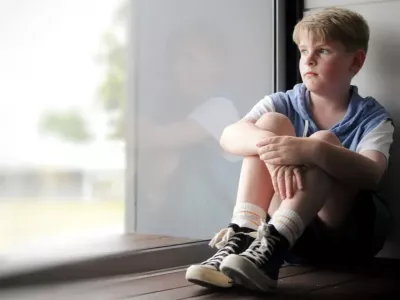Follow your instincts? Yes, but not always.

Have you ever been driving when the car in front of you stops suddenly? Maybe, as you slam on your brakes, you also stick your arm out to protect the person in the passenger seat…even when you’re on your own?
Human instincts are a great survival tool, allowing us to escape danger, keep warm and seek out the non-poisonous berries (the ones that taste sweet). But while there are many situations where “just follow your instincts” is great advice, that’s not always the case.
INSTINCTS ARE GREAT, EXCEPT WHEN THEY’RE NOT
The problem with always following your instincts is that there are certain times and situations where you’re better off doing something else. You sometimes just need a little help to figure that out. What may seem strange at first can turn out to be the smartest approach.
Recently, I read a really interesting example of this kind of thing: during World War II, the US Air Force did a study of all the planes that made it back to base after a mission. They needed to work out where to place some extra armour on the plane, to protect it during combat. After looking at where most of the bullet holes were on the planes, they thought “yes, that’s where the armour should go”.
This seems logical, and maybe even instinctively correct. But then someone figured out that all the planes they were studying were the ones that had been shot but still made it back to base. They’d been hit in parts of the plane that could withstand it, and still keep flying. So armour actually needed to be put on the OTHER sections of the plane, because that’s where all the planes that DIDN’T make it home got hit!
Sure, it makes sense when you really, really think about it. But how many of us would have agreed with the original suggestion? (I did!) It really took another person stepping back and seeing it differently to figure out what was going on.
And parenting can be like that too. Sometimes your first instinct won’t lead you in the right direction. It may take a different perspective to see what’s working and what’s not.
IN A PARENTING SITUATION
Of course, there are many times when parents follow their instincts, and it’s a good thing. We nurture, protect, and guide our children. Our primary instinct is to love and care for them.
But there are times when a parent’s first instinct may result in the opposite of what they’re trying to achieve. Think of the parent who wants their child to do well in school…so does the child’s homework for them.
If the parent does the homework, the child doesn’t learn the subject and they don’t learn that success takes effort. But these are things they have to learn, if they’re going to do well at school, or in life.
IT’S NATURAL, BUT IS IT HELPFUL?
There’s another really common example of first instincts not really being helpful. In fact, it’s so common that many – if not most – parents really think this is the only thing they can do. It feels natural. But they may be creating the opposite result of what they want.
How many people might automatically yell when they catch their kid misbehaving, or when they want their child to do something immediately? The parent’s original goal is to change the child’s behaviour and it’s the only thing they can think of to achieve that. But what they often end up doing is creating a trap for themselves. Why is it a trap? And how does following your instincts create the opposite effect?
THE OPPOSITE EFFECT
Yelling or threatening kids to get them to do what needs to be done might be a parent’s first instinct. But it really only teaches kids to yell and scream. Kids also come to learn that parents aren’t serious unless they’re shouting. (And it 'teaches' parents that kids will only respond if mum or dad is yelling.)
THE STOVETOP SITUATION
Picture this scenario: you’re busy making dinner when you realise your child still hasn’t had their bath. So because you feel like you’re too busy to stop what you’re doing, and you don’t have time to leave the kitchen, you call out to your child to go and have their bath. And get no response.
So you call out again, this time a little louder. Still no response, and no sign of them leaving their bedroom. Well, now you’re building up steam, just like that saucepan. You yell!
You march into your child’s room and tell them in no uncertain terms to get into that bath NOW!
Meanwhile, your child was completely absorbed in their game, or their homework, or something, and either didn’t hear you, or didn’t really register that you were asking them to do something. You come in with all guns blazing and now they’re ready to defend themselves and they yell back. You get into a screaming match. And then you smell something; the dinner’s burning!
So what parents do instinctively may not be working. That can be hard to see,or admit. There’s another way – and a quicker way – to handle this kind of situation, but for many parents, this kind of scenario is their blind spot: “Doesn’t everybody do that?”; “Of course I yell at them from another room – who’s got time to do anything else?”; “Well, what else could I do?”
When people are ready to start asking that last question, things can begin to change.
CHANGE STARTS WITH RECOGNITION
Even if what you’re doing in a parenting situation really isn’t working, but you feel like you’re stuck following your first impulses, it’s important to know things can change. You can learn skills and techniques that are more effective, rather than relying on instinct alone. But first you have to be able to see the problem clearly, get it out of the 'blind spot', and be open to different ideas.
Even parents who weren’t raised with harsh punitive methods may find themselves acting on impulse to discipline their child. It’s just the only thing they can think of to do at the time or in the situation.
Recognising why kids do what they do is a big part of Triple P, and so is learning to self-reflect and see things in a different light. It’s also about helping parents see that they’re not wrong or bad, and that many of their parenting instincts are great – but maybe a few tweaks could benefit everyone.
Just like the people trying to figure out where to put the armour on the planes, what appeared to be the natural solution turned out to not be the best idea. But when someone gives you some extra information, and helps you figure out how to look at things differently, a new approach starts to make sense.

